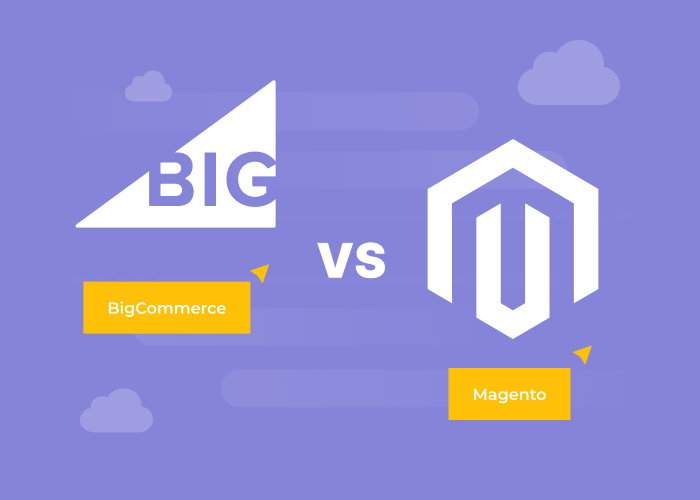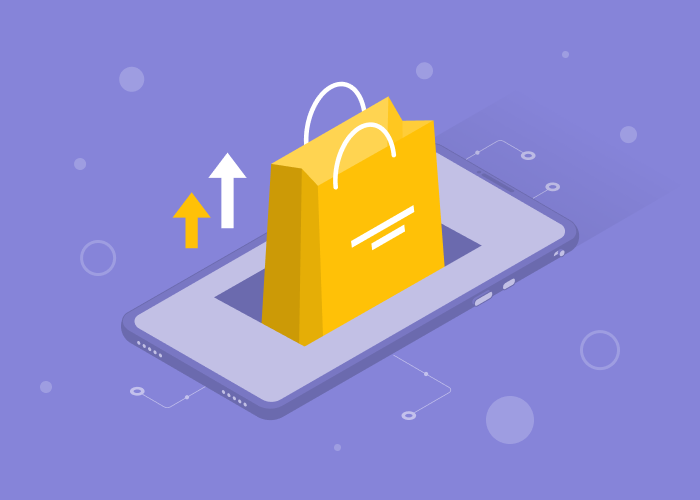Content
What Is Mobile Commerce? Everything You Need to Know

Time to read: 15 minutes
Our modern lifestyles require mobility and flexibility. Now people can quickly find their way to the nearest grocery store with any navigation app or easily hail a taxi with just a few clicks.
Comfort is even more important with the advent of mobile commerce (m-commerce). It is almost impossible to imagine our routines without the various applications and functions of the mobile devices that we frequently use while pursuing our everyday lives, working, traveling, etc.

What is m-commerce? What are the types of mobile commerce? What are the advantages and disadvantages of integrating m-commerce into your retail business strategy? What are the capabilities of Magento and Shopware in terms of m-commerce feasibility? Find answers to all of these questions by reading this article.
What Is Mobile Commerce?
Let’s start with a comprehensive definition of mobile commerce, which is a significant part of e-commerce. Mobile commerce involves the use of wireless handheld gadgets, like smartphones and tablets, to conduct commercial online transactions. Mobile commerce includes the purchase or sale of products and services as well as online banking operations.
To learn more about the differences between m-commerce and e-commerce, read “M-Commerce vs E-Commerce: What’s the Difference?” and watch the video below.
Currently, 6.64 billion people use smartphones, but according to the forecast from Ericsson and The Radicati Group, the number of worldwide smartphone users will likely reach 7.33 billion by 2025.
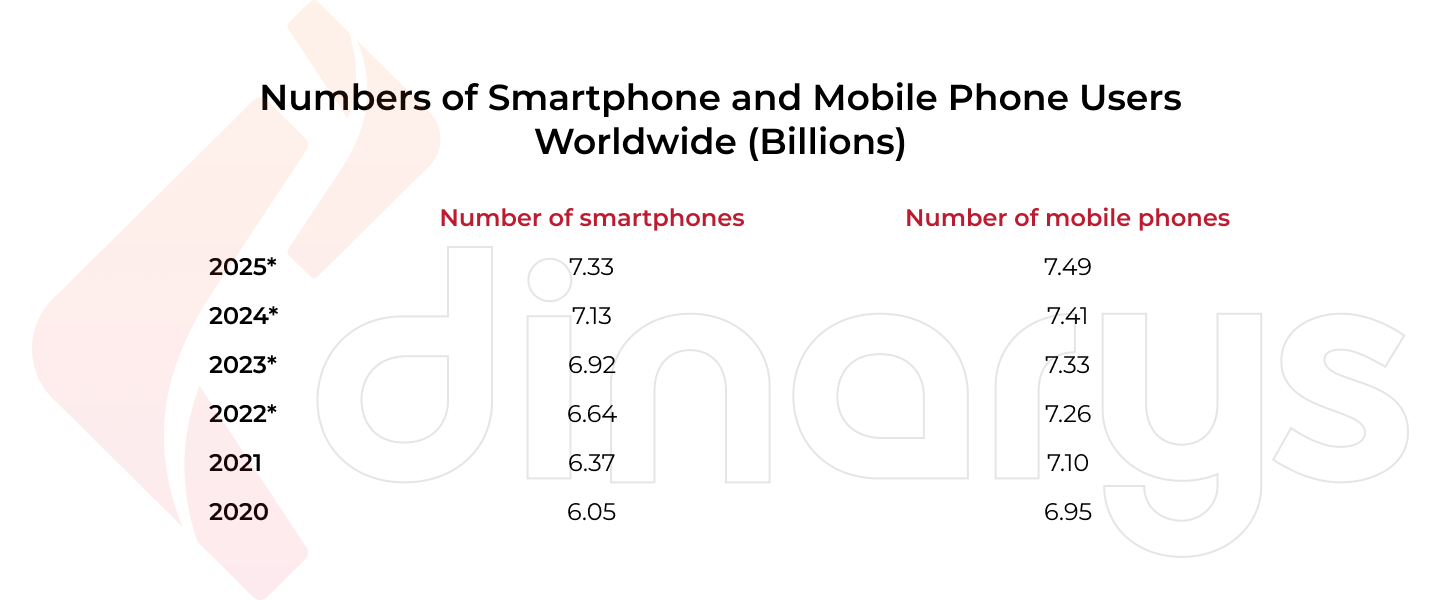
The popularity of mobile shopping has increased with the number of smartphone users. In fact, e-commerce entrepreneurs throughout the world have used this opportunity to boost sales for quite some time. Mobile shopping has also led to the rise of mobile and PWA first strategies, which merchants use to position mobile development at the forefront of their online presence development.
Two Ways to Deliver a Mobile Experience
Companies can engage in m-commerce operations via browsers or mobile applications.
- The desktop version of a website should be intuitive and appealing to the eye. Similarly, the mobile experience delivered through the browser should incorporate the basic customer preferences that customers have for their e-commerce journeys, such as an attractive visual layout, user-friendliness, and fast loading speed. This article explains how to optimize your website for mobile shopping.
- Mobile app development is an important tool for merchants who focus on a personalized user experience. By developing your own mobile application, you can reach your target audience via push notifications and launch tailored marketing campaigns to facilitate interaction with your clients.
Mobile Commerce Advantages
M-commerce expands the range of prevalent marketing tactics for your business and provides several advantages, including the following:
Omnichannel experience
Many online buyers already depend on the shift from single-channel to omnichannel retail, and they greatly appreciate brands that offer consistent shopping capabilities through multiple sales channels.
Mobile retail is the core of the omnichannel strategy. By using m-commerce, companies can improve their brand awareness, increase customer loyalty, and enhance the cost-effectiveness of their overall online presence. Numerous statistics support these concepts. For example, according to the Aberdeen Group, companies that used an omnichannel approach reduced their cost per contact by 7.5%, but companies without an omnichannel approach experienced only a 0.2% year-over-year decrease.
In addition, incorporating mobile marketing into your omnichannel strategy allows you to leverage the foot traffic in brick-and-mortar shops by using geotargeting functionality.
Establishing a mobile loyalty program is another marketing technique that can help you engage with your customers. Instead of providing old-fashioned, plastic loyalty cards to your frequent flyers, consider developing a loyalty program app. Take a look at our case study “Aroma Kava Mobile App” and learn how to increase your average order value by digitizing your loyalty program.
Read also: Composable commerce advantages: Building omnichannel marketing strategies
Data insight
The concept that demand creates supply is outdated. Considering data-driven marketing, the new norm is demand sharpens supply. Businesses invest in various data collection and analytics tools to understand the ever-changing trends in customer behavior.
M-commerce is one of the most feasible tools to obtain valuable customer data. Mobile app analytics allow companies to control buyer activity at every step of the process—from product discovery to the final step of checkout. Thus, you can monitor the right KPIs, such as conversion, retention, and churn rates, and identify the areas for improvement.
Lets talk about itHave a project in mind?
Direct communication at the right time
Brands communicate with their audience using diverse methods, such as email marketing, social media, and in-app push notifications, but the latter is the most direct method.
Many marketers find push notifications to be advantageous for the following reasons:
- Short attention span. Recent studies indicate that the average online consumer attention span is approximately eight seconds. Push notifications enable merchants to consider this fact by using small ad formats.
- Resistance to ad blockers. Adblockers are a significant obstacle for retailers who want to promote their products and services. Fortunately, retailers can bypass this marketing vulnerability with push notifications.
- Wide reach. Push notifications can reach users through both stationary and mobile devices. Most operating systems (e.g., Android, macOS, and Windows) and browsers (e.g., Chrome, Opera, Firefox, and Safari) support push notifications.
In addition, push notifications assist merchants in delivering countless messages. The most frequently used notifications are listed in the chart below.

One-click checkout functionality
Emerging mobile payment solutions have raised the bar, and they are noteworthy because they provide higher security, faster checkout speed, and lower banking fees.
Furthermore, mobile payment options have satisfied the requirement to provide customers with one-click checkout functionality, and sellers are more frequently using m-commerce and opting for payment methods such as Apple Pay, Visa Checkout, and PayPal One Touch. Entrepreneurs inevitably choose these payment options to increase their repeat purchase rate.
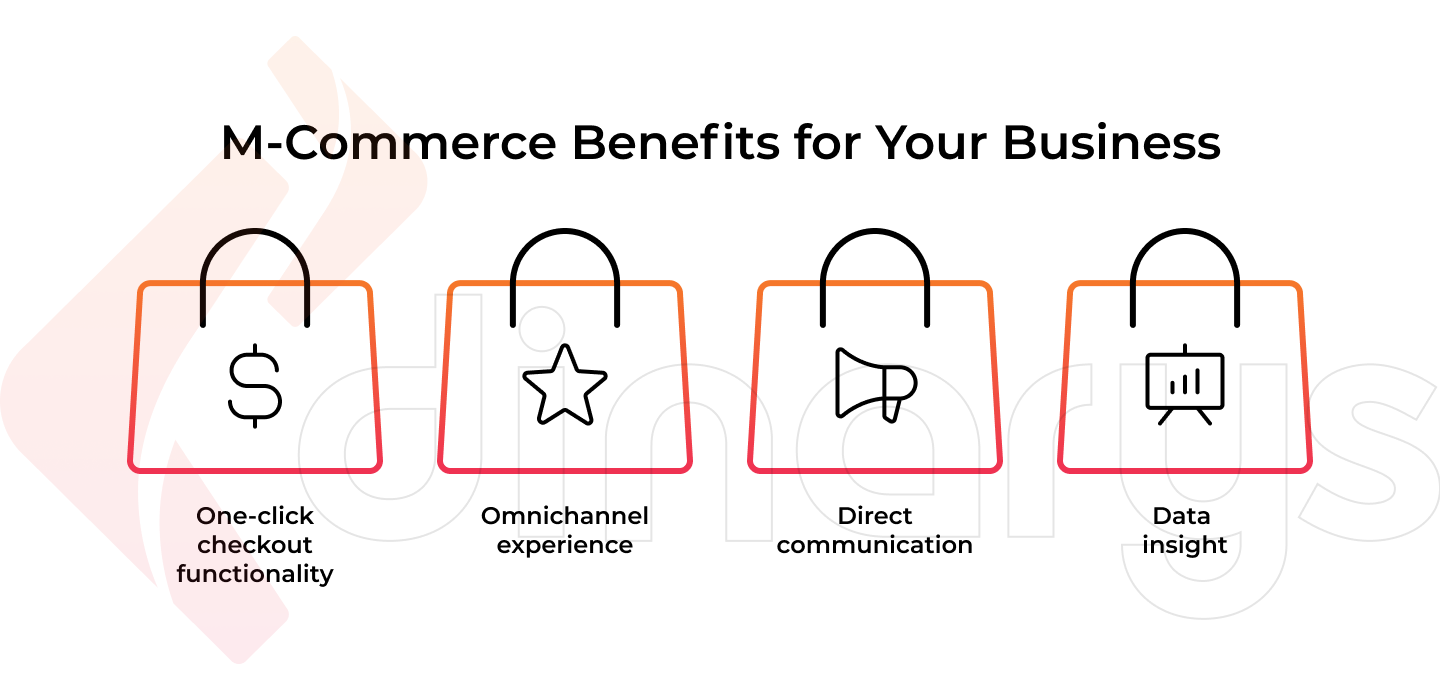
Mobile Commerce Disadvantages
Dinarys anticipates not only opportunities but also risks, so we believe it is important for you to understand the possible disadvantages of using m-commerce.
Diversity of payment methods
Offering various payment options is a must-have for online stores, especially international retailers. However, this benefit also presents some challenges. For example, some payment providers may not be available in all the regions where you do business. In addition, depending on the location, customers may prefer specific payment methods, and this complicates the task of managing business in the global arena.
In light of these issues, sometimes less is more. The most appropriate solution for this problem is to conduct a detailed examination of your market niche that considers the preferences of your different customer groups in accordance with their location, age, etc. This detailed analysis will allow you to offer specific payment options that work best for your business.
Data privacy challenges
The ability to access valuable customer data is an advantage, but it leads to data privacy concerns. Brands that handle a large amount of sensitive customer data assume more responsibility to safeguard this information. If you are considering going mobile, then you should understand all the risks associated with data security and ensure that your company complies with strict data protection standards, such as PCI and GDPR.
Growing competition

According to Statista, the global share of m-commerce as a part of e-commerce has grown to 72.9%. It is not surprising that m-commerce has become the norm. However, it is problematic when m-commerce websites and mobile apps look and feel the same to users.
Therefore, merchants should develop innovative levers of influence for mobile shoppers that distinguish their brand from others, and they should pursue m-commerce standards, related to the appearance of mobile sites, ease of navigation, etc.
We will later discuss how to create a one-of-a-kind mobile user experience with the help of Magento and Shopware—two extremely customizable e-commerce platforms.
Personalization limitation
Businesses should consider the personalization limitations of m-commerce when creating their mobile shopping experiences. To hit the target and deliver the right message to the right hands, merchants should learn to masterfully combine m-commerce with the traditional shopping experience.
Personalization is one reason to use the PWA first approach. PWA is an acronym for “progressive web application,” and it encompasses the functionality of both web and mobile apps. PWA is phenomenal because it is delivered through the web, but it feels like an actual native mobile app. Consequently, the PWA approach offers a better user experience across all devices.
Notably, PWA is also cost-efficient. Instead of developing three separate products for your website, Android app, and iOS app, you can create an all-in-one solution with PWA and reap the same benefits at a lower cost.
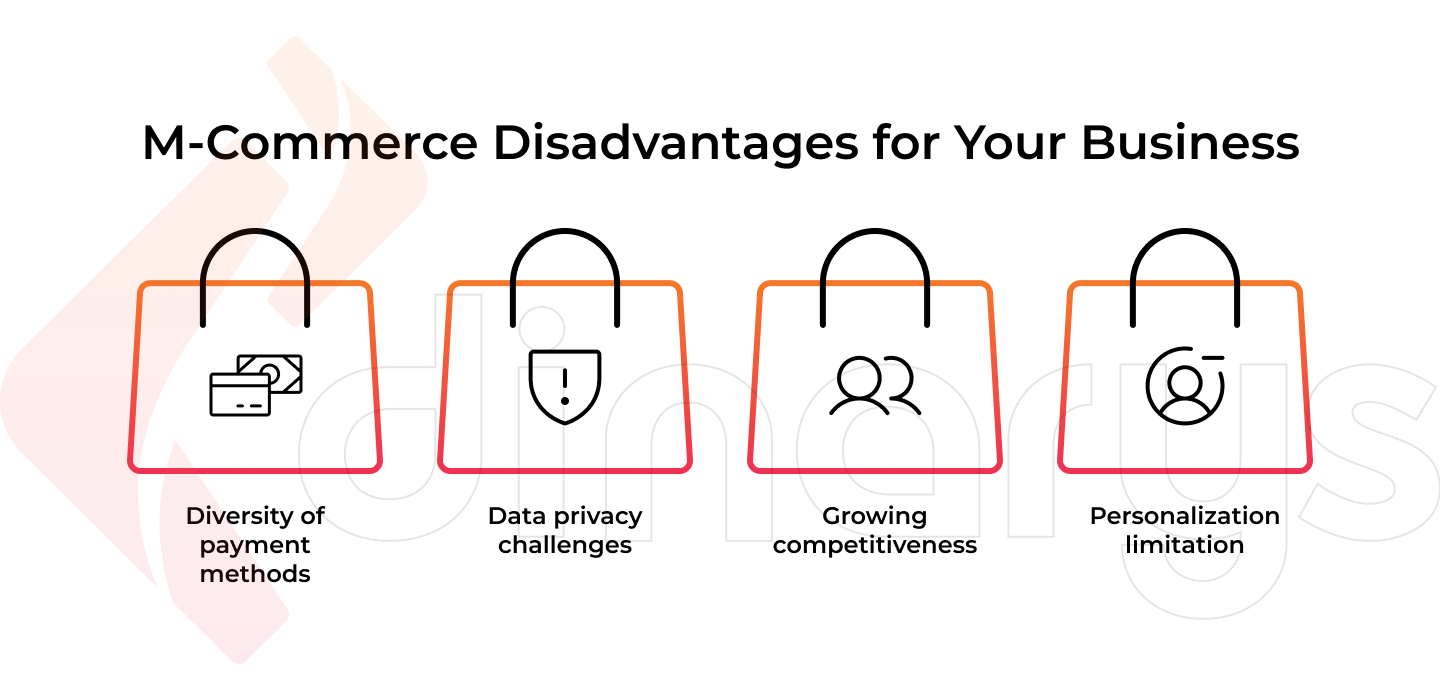
Mobile Commerce Trends
Obviously, each e-commerce product provides unique features, but businesses should still follow m-commerce trends. Below we explain the top three mobile commerce trends that you can adapt to meet the needs of your individual business.
1. One-click ordering
Customers become frustrated and abandon their cart for various reasons, such as a long and confusing checkout process, unexpected shipping costs, and lack of customer support. As statistics show, the final step of order checkout is one of the most vulnerable. In fact, 17% of US online buyers abandon their shopping cart if the checkout process is too complicated.
Many e-commerce retailers use one-click ordering to eliminate the risk of shopping cart abandonment. M-commerce provides more tools than e-commerce to counteract this risk. Mobile apps allow customers to store their payment credentials securely, and this increases the number of repeat purchases since customers do not have to enter their payment data each time.
2. Voice shopping
Voice assistants, like Google’s Siri and Amazon’s Alexa, have been on the market for a long time, and voice shopping has recently started to gain popularity. Customers frequently use voice search options now to review products, place orders, track delivery, and contact customer support.

More and more users are seeking voice features in mobile apps. Therefore, it is crucial for brands to include this option in their mobile applications. Voice features also help brands optimize their mobile SEO so that their app and their mobile website operate synchronously to tackle on-the-go local and vocal requests seamlessly.
3. Social commerce
According to statistics from 2022, up to 58.4% of the population currently use social media. Entrepreneurial marketers consider social media as a great opportunity to expand their sales channels because of its potential for consistent revenue generation.
Instagram, TikTok, Facebook, and other social media sites are no longer just entertainment venues but also full-fledged retail platforms with all the essential capabilities for doing business. For example, e-commerce companies can tag their products in each image on Facebook and Instagram and promote user-friendly links for customers to click and immediately begin shopping.
Lets talk about itHave a project in mind?
Magento and Shopware for M-Commerce
If you want to fully leverage m-commerce, then investing in Magento 2 or Shopware 6 is the ideal option for you. Dinarys is an Adobe and Shopware Solution Partner, so we have broad expertise in Magento and Shopware development for both B2B and B2C business models. In terms of m-commerce feasibility, these CMSs provide many advantages.
Magento 2 m-commerce merchants can apply the following best mobile optimization practices to their businesses:
- Responsive web design
- Optimized images and videos
- User-friendly navigation
- Intuitive checkout process
- PWA
Using Magento PWA, you can transform a traditional website into an application that functions smoothly via mobile browsers.
Another worthwhile system for delivering an app-like experience is Shopware. Shopware PWA offers the following benefits:
- Small app size
- The possibility to work in an offline mode
- Cross-browser and cross-device compatibility
- Cheaper development and maintenance

Also, we recommend you check our detailed comparison between M-commerce and e-commerce.
Dinarys’ M-Commerce Case Study: The Foxtrot Mobile App
Why choose Dinarys for your PWA or mobile app development? We are a client-oriented company that knows how to find the right solution to achieve your project goals. The improved market outcomes we have provided for our clients testify to the quality of our work.
Foxtrot is a popular Ukrainian chain of electronics and home appliances stores. Since 1994, the company has gained a loyal audience of customers and has led the market, but even an established retailer like Foxtrot needed to scale over time. Thus, the company used our mobile app development services. To learn more about the solution we provided for Foxtrot, please visit our Foxtrot Case Study page.
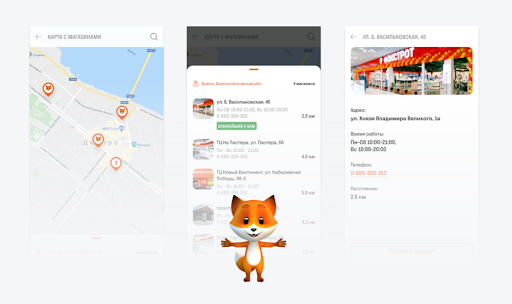
Final Word: When to Choose M-Commerce?
So what is m-commerce? As we discovered, m-commerce is more than just buying goods via smartphones. Saturated with technologies, the e-commerce market establishes new rules but also presents challenges. Now is the time to improve your mobile experience if you have encountered any of the following situations:
- Your existing sales channels cannot serve all possible clientele.
- You do not have the data needed to proceed with important decisions regarding the experiences of your customers.
- Many of your customers abandon their shopping carts during the checkout stage.
The sooner you embrace m-commerce and optimize your mobile business performance, the better. At Dinarys, we are here to assist you with this activity. Contact us to discuss your m-commerce project, and we will determine how to transform your weaknesses into strengths.
Let professionals meet your challenge
Our certified specialists will find the most optimal solution for your business.


